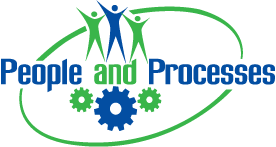 Although these exact words do not appear in Lewis Carroll’s ‘Alice in Wonderland’ the conversation between The Cat and Alice captures the sentiment that you need to have a goal in mind if you are planning a journey. The actual words
Although these exact words do not appear in Lewis Carroll’s ‘Alice in Wonderland’ the conversation between The Cat and Alice captures the sentiment that you need to have a goal in mind if you are planning a journey. The actual words
‘“I don’t much care where–” said Alice. “Then it doesn’t matter which way you go,” said the Cat sum up the approach that many organizations take to improving performance. Sometimes it’s even worse than that – they know where they want to go but really don’t understand why they need to go there other than other people are going there. Let’s assume that you want to plan a road trip but don’t necessarily know the best route so you go to one of the more popular map websites – you get to the general area you want to be in and the hit the ‘Directions’ option. What’s the first thing you have to enter – yes that’s right ‘From’ if you can’t enter this then the program can’t tell you how to get to your destination? So why do so many organizations start to plan improvements without first assessing where they are? Not only do you not know the directions to take, what turns to make or how long it’s going to take but you don’t have any idea of the effort it will take to complete the journey – so how do you then decide if it’s worth it – sure I think it’s really worth going to the Conference in Australia but when I see how much time and money it will take to get there I may decide that the cost outweighs the benefit.
So why don’t organizations start with finding out where they are – an assessment we call it? Do they not think it is important? Have they read somewhere that high performing teams reach this level for a specific topic? Does everyone else seem to be doing it? Do they think that they understand exactly where they are at? Do they not know what they just don’t know?
Considering a Maintenance Assessment, Gap Analysis and Strategic Roadmap for Reliability? Get Started Now.
The reason is probably one or more of those questions but it really begs another question – how do they prioritize their efforts?
What we’ve found works for most organizations is that they have someone carry out a current state analysis over the whole of the maintenance and reliability department – this can be someone from within but there is a great danger of them accepting norms, not challenging below the surface because ‘everyone knows’ and in general trying to present that what they do know is enough. Someone from outside doesn’t bring the paradigms of the organization and if chosen properly does know ‘What they just don’t know’. The other advantage of bringing in someone from outside is that they can push you to understand that you may not have the measures needed for evaluation for important topics.
When you have all of the information or at least have started to gather it or measure it, then the next step is to fill that ‘To’ box on the map website – where do you want to go – your future state. However, this is not quite as simple as filling in the ‘To’ box as there needs to some form of prioritization for the journeys. You need to understand what is important for your organization – not what your neighbors are doing or what the internet tells you is important – but what is going to make a difference in the success of your organization – and each organization will have slight differences. The goals maybe affected by market conditions, regulatory requirements competitors moves – but whatever it is, this will become the driver for your journey.
Now that you’ve filled in the ‘From’ and ‘To’ boxes you can hit the ‘Get Directions’ box but in your case this will be the ’Develop the Roadmap With Help From Others’ box. This is where you will take the journeys – highest priority first- and with the help of the person who worked with you on the ‘From’ and ‘To’ start to plan the steps that you need to take. Sometimes it will start with general areas before breaking it down into specific steps as this will help in your ability to evaluate whether you are in fact going in the right direction by checking if you did reach that area or level. When you have the steps you can decide how you will cover them – walk, take a bus, drive or more likely vibration analysis, CMMS optimization, training etc.
The result should be that you make steady progress ‘From’ towards the ‘To’ and have the ability to change course due to roadworks or closures – those stumbling blocks that get in the way of every Maintenance and Reliability initiative. My only words of caution are that trying to make the journey without an up-to-date map and understanding of the conditions can definitely take longer and in some instance mean you never get there – I think of the times I have ignored my GPS to take the out of the way route because I knew the simpler more direct route, only to find myself sitting in traffic for hours!
If you are thinking about ‘The Journey’ and would like some help, to bounce some ideas or simply get encouragement – then – get in touch!
 TAKE YOUR ORGANIZATION TO THE NEXT LEVEL WITH YOUR
TAKE YOUR ORGANIZATION TO THE NEXT LEVEL WITH YOUR
MAINTENANCE AND RELIABILITY PRACTICES
Struggling to get traction with asset reliability and availability? PM program ineffective? No using predictive tools well, if at all? Maintenance costs Ready to do something about it? This course is designed to educate you and your managers in the tools and methods to overcome those challenges
Why attend the Maintenance and Reliability for Managers - 4 Part Series?
Get Started Now!
